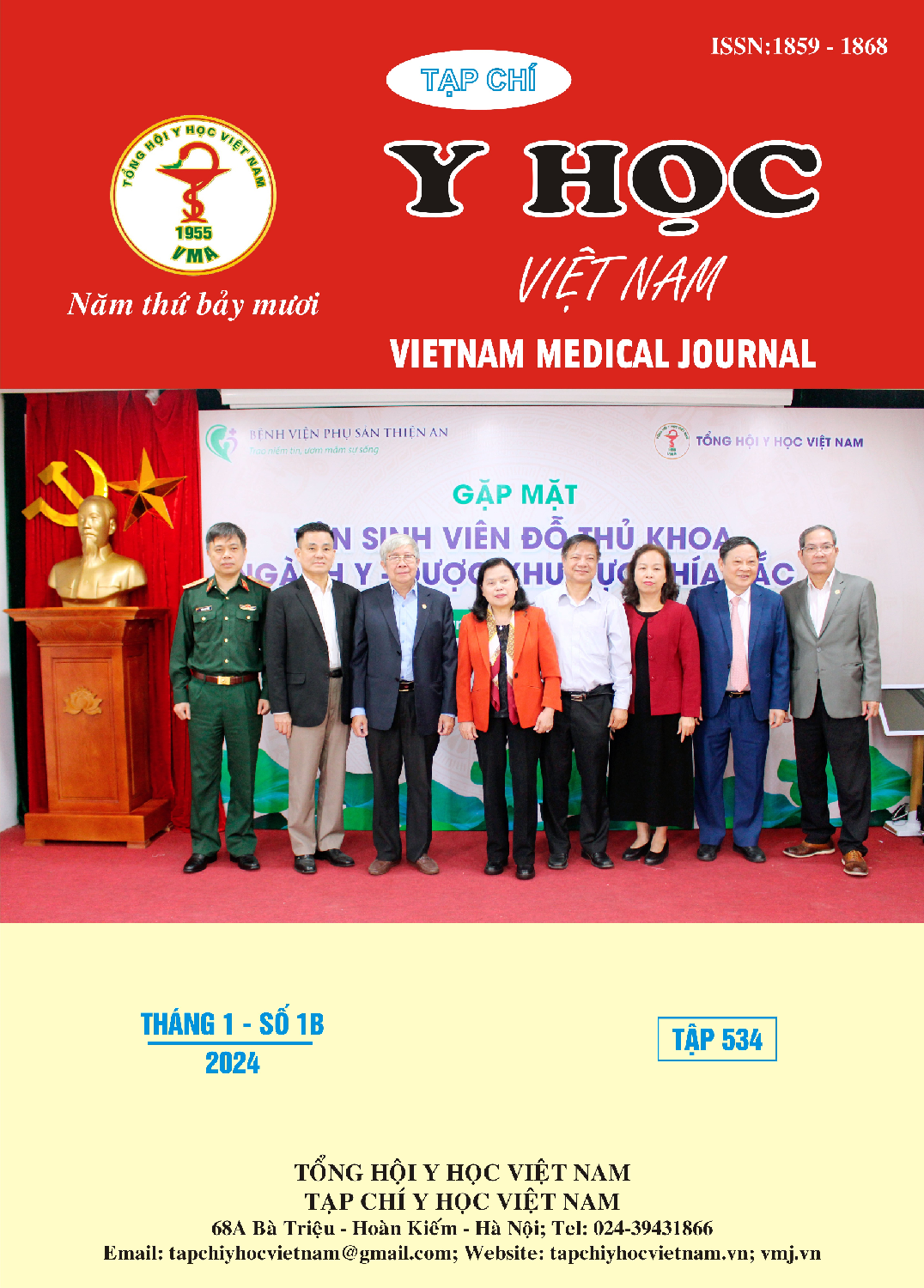ĐÁNH GIÁ HIỆU QUẢ CỦA PHẪU THUẬT NỘI SOI CẦM MÁU MŨI TẠI BỆNH VIỆN TAI MŨI HỌNG TRUNG ƯƠNG
Nội dung chính của bài viết
Tóm tắt
Mục tiêu: Xác định vị trí, tần suất, hình thái lâm sàng của các điểm chảy máu mũi qua phẫu thuật nội soi và đánh giá hiệu quả điều trị của phẫu thuật nội soi cầm máu mũi tại Bệnh viện Tai Mũi Họng Trung Ương. Đối tượng: Bệnh nhân chảy máu mũi nguyên phát được phẫu thuật nội soi cầm máu mũi tại Bệnh viện Tai Mũi Họng Trung Ương. Phương pháp: Mô ta một loạt ca bệnh. Kết quả: Đa số chảy máu mũi nguyên phát gặp ở lứa tuổi trung niên với tuổi mắc bệnh trung bình là 49,38 ± 13,97 tuổi và gặp ở nam nhiều hơn nữ với tỷ lệ nam/nữ là 2,43/1. Có 21 (43,75%) bệnh nhân có tiền sử tăng huyết áp và các bệnh lý tim mạch kèm theo. Hầu hết các bệnh nhân bị chảy máu mũi một bên, chủ yếu là chảy máu mức độ vừa với tỷ lệ 77%. Điểm chảy máu phát hiện trong phẫu thuật nội soi có nhiều vị trí khác nhau tương ứng với các nhánh cấp máu của động mạch sàng trước và động mạch bướm khẩu cái. 44 (91,7%) bệnh nhân không có hiện tượng chảy máu mũi tái phát sau phẫu thuật. Kết luận: Phẫu thuật nội soi cầm máu mũi giúp đánh giá chính xác vị trí các điểm chảy máu tương ứng với các nhánh động mạch cấp máu cho niêm mạc mũi và có hiệu quả cầm máu cao, giảm tỷ lệ tái phát.
Chi tiết bài viết
Tài liệu tham khảo
2. Kumar, M.V.V., et al., Rigid nasal endoscopy in the diagnosis and treatment of epistaxis. J Clin Diagn Res, 2013. 7(5): p. 831-3.
3. Liu, Y., et al., Management of intractable epistaxis: endoscopy or nasal packing? J Laryngol Otol, 2012. 126(5): p. 482-6.
4. Loures, C.N., et al., Systematic endoscopic assessment of bleeding sites in severe epistaxis: the role of the S-point and the superior epistaxis. Rhinology, 2020. 58(5): p. 477-481.
5. Tunkel, D.E., et al., Clinical Practice Guideline: Nosebleed (Epistaxis). Otolaryngol Head Neck Surg, 2020. 162(1_suppl): p. S1-S38.
6. Kasle, D.A., K. Fujita, and R.P. Manes, Review of Clinical Practice Guideline: Nosebleed (Epistaxis). JAMA Surg, 2021. 156(10): p. 974-975.


